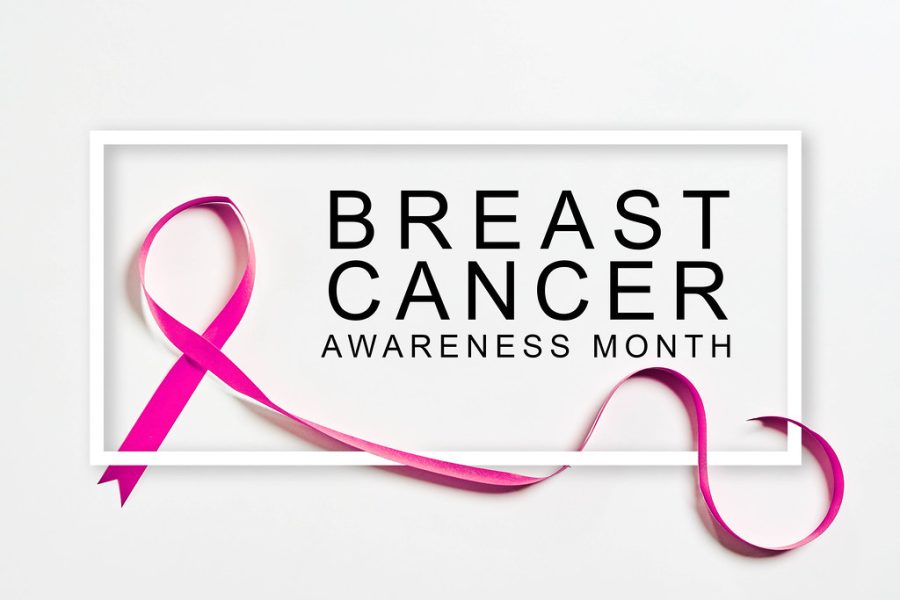Breast Cancer Awareness Month
The importance of understanding and observing your breasts.
October 7, 2022
One out of every eight women in the United States develops Breast Cancer over the course of their lifetime. Breast Cancer is an abnormal growth of cells in the breast, which typically forms a tumor. There are multiple types of breast cancer, that depends on the area of the breast in which the cancer forms. The two most common types of breast cancer are Invasive Ductal Carcinoma and Invasive Lobular Carcinoma. Invasive Ductal Carcinoma is where the cancer begins in the ducts and then spreads outside into other parts of the breast tissues. Invasive Lobular Carcinoma involves the cancer beginning in the lobules and then spreading to the breast tissue. And once again, the cancer can spread to other parts of the body.
Just like any other sickness, there are signs and symptoms of breast cancer that everyone should be aware of. Some of those symptoms include but are not limited to:
- lumps in the breast or underarm
- irritation and dimpling of the breast
- any change of size or shape of the breast
- pain in any area of the breast.
There is no such thing as a normal breast, for breasts are shaped differently. Although your breast may be different from another person, that does not mean you have breast cancer. Get to know your breast and tendencies that your body has in order to understand abnormalities. However, not everything is cancer—a lump could merely be a build-up of fluid or nothing of note to worry about. If you have any concerns, reach out to your health provider.
You might be reading this and wondering why this information applies to you or is appearing in a high school newspaper. It is relevant for everyone to understand the severity of breast cancer, for it could easily affect you or a loved one. Awareness is the first step to a healthy and observant lifestyle.
Early detection of breast cancer increases the survival rate to 95%. The largest risk is simply being a woman and getting older. Our genetic makeup is another large factor that could influence breast cancer, for genetic mutations and family history of breast or ovarian cancer can lead to a higher risk of having breast cancer. More risk factors are related to personal history, such as reproductive history, having breast cancer in the past, non-cancerous breast diseases, and many more variables. It is vital that you know your family history.
Although the previously listed risk factors are unchangeable, there are controllable aspects like physical activity, reproductive history (such as being pregnant for the first time after 30), taking hormones, being obese before or after menopouse, etc. Understanding these factors are necessary for preventing breast cancer.
The sad truth about Breast Cancer is that we almost all know someone who has battled the unforgiving illness. All who fight it, fight with immense strength, whether or not the outcome is in their favor. According to the CDC, 42,000 out of the 264,000 women affected by breast cancer lose their battle, and 500 out of the 2,400 men lose theirs. Let’s try winning more battles by identifying and treating breast cancer early on.
All information was found at https://www.cdc.gov/cancer/breast/basic_info/what-is-breast-cancer.htm to find out more information go to cdc.gov






